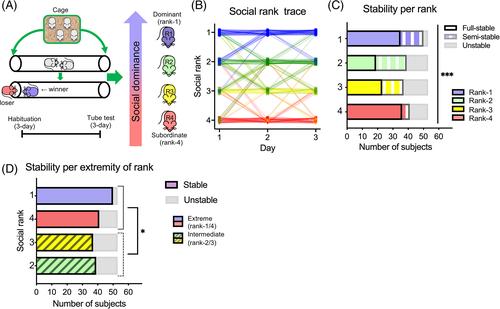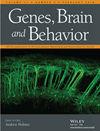Experience of a hierarchical relationship between a pair of mice specifically influences their affective empathy toward each other
Abstract
Prior experience of social hierarchy is known to modulate emotional contagion, a basic form of affective empathy. However, it is not known whether this behavioral effect occurs through changes in an individual's traits due to their experience of social hierarchy or specific social interrelationships between the individuals. Groups of four mice with an established in-group hierarchy were used to address this in conjunction with a tube test. The rank-1 and rank-4 mice were designated as the dominant or subordinate groups, respectively. The two individuals in between were designated as the intermediate groups, which were then used as the observers in observational fear learning (OFL) experiments, an assay for emotional contagion. The intermediate observers showed greater OFL responses to the dominant demonstrator than the subordinate demonstrators recruited from the same home-cage. When the demonstrators were strangers from different cages, the intermediate observers did not distinguish between dominant and subordinate, displaying the same level of OFL. In a reverse setting in which the intermediate group was used as the demonstrator, the subordinate observers showed higher OFL responses than the dominant observers, and this occurred only when the demonstrators were cagemates of the observers. Furthermore, the bigger the rank difference between a pair, the higher the OFL level that the observer displayed. Altogether, these results demonstrate that the hierarchical interrelationship established between a given pair of animals is critical for expressing emotional contagion between them rather than any potential changes in intrinsic traits due to the experience of dominant/subordinate hierarchy.
Practitioner points
- Subordinate observer or dominant demonstrator resulted in higher affective empathic response in familiar pairs but not unfamiliar pairs.
- The relative social rank of the observer with respect to the demonstrator had a negative linear correlation with the affective empathic response of the observer in familiar pairs but not unfamiliar pairs.
- The effect of social rank on affective empathy is attributed to the prior social hierarchical interrelationship between them and is not due to intrinsic attributes of an individual based on one's dominance rank.


 求助内容:
求助内容: 应助结果提醒方式:
应助结果提醒方式:


